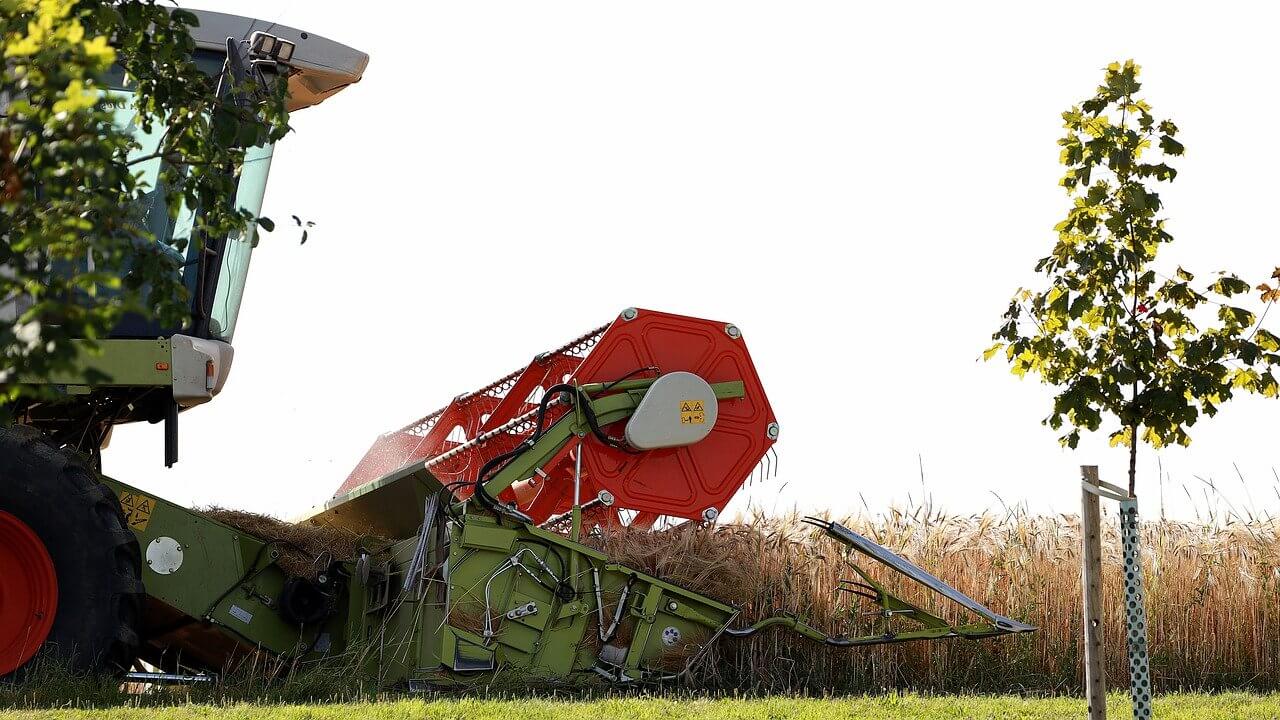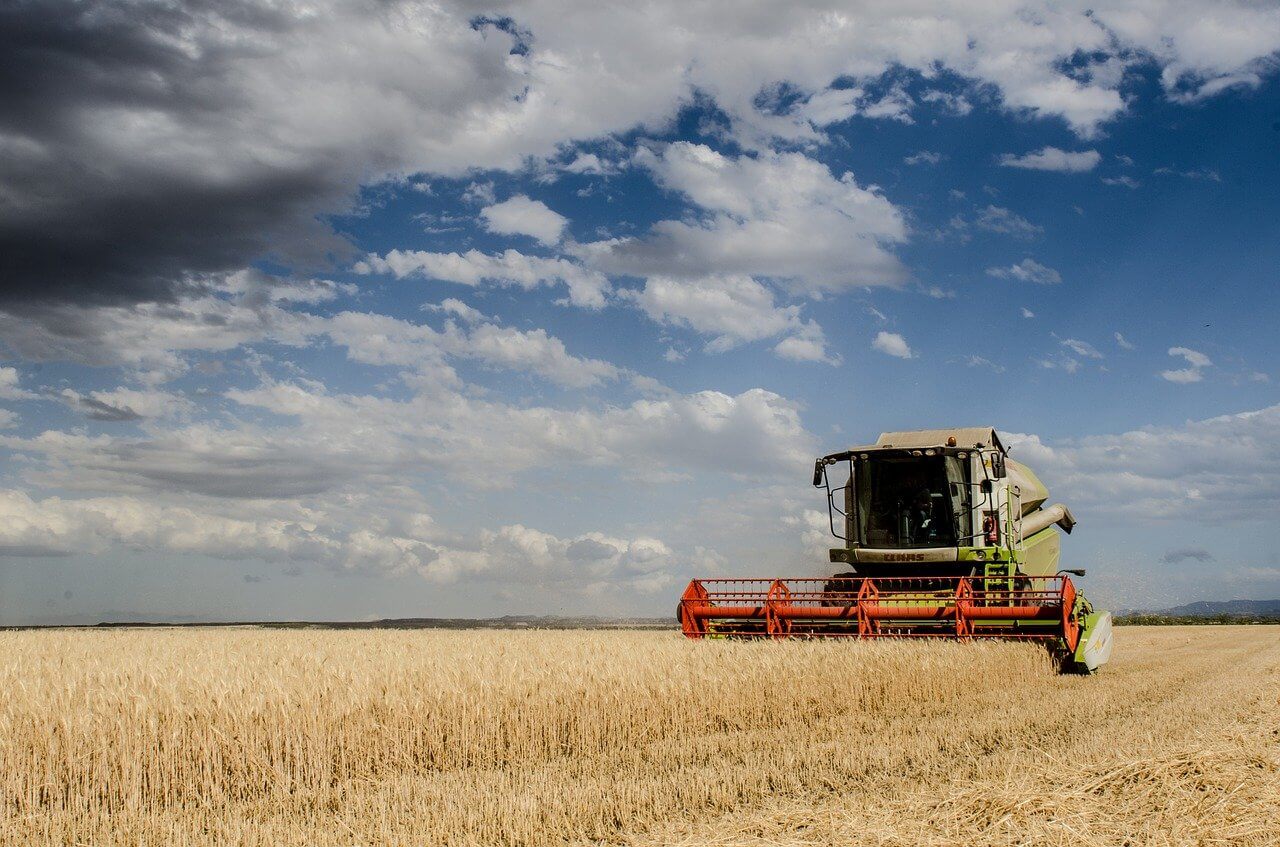A combine is an essential time and energy saver on the farm. It takes the place of quite a bit of manpower and horsepower, but how do you drive it, and how fast can it go? In this article, we review the basic steps of combine operation and provide smart tips for boosting speed. Read on to learn more on how to run a combine.
What You'll Learn Today
How To Drive A Combine Harvester
1. Start by reading the owner’s manual
Pay close attention to the location and purpose of every pedal, lever and regulator. Even if you are already familiar with one model of combine, your new one may be entirely different.
2. Do a safety walk-around before and after each use
Make sure that your levers are in a neutral position, your brakes are on, your engine is off and the key is put away in a safe place. Examine the auger and the header to be certain no obstructions are present.
3. Start up
In most combines, you’ll start up by pumping the fuel pedal and turning on the ignition. You’ll increase your speed by pushing the correct lever forward. This will vary from machine to machine. Only rev the engine when your machine is in neutral.
4. Adjust the header position
Depending upon weather conditions (wet or dry) you’ll adjust the header position. It should be higher in wet conditions and lower in dry conditions.
5. Start operating
When operating, you’ll push forward the thresher control first and then push the header lever forward. This is important because the mechanism that detaches grain from heads has to be running at high speed before the crop is drawn up into the machine. When you are shutting down, you’ll push the header lever first and then the thresher control.
6. Take care of your brakes
Be sure to release the brake before you press the drive lever forward. Engage the correct gear for the type and condition of crop being harvested. You can get this information from your owner’s manual.
7. Shutting down
When shutting down, apply your brake and put all of your controls in neutral. After the engine is shut down, be sure to clean off the cylinders and the blades. Be sure you take the ignition key with you when you are done.
How Fast Can A Combine Go?

Because there are many adjustments involved in running your combine at top capacity, speed and efficiency according to the type of crop being harvested and the conditions on the ground, there is no easy answer to the question “How fast can a combine go?”
You must synchronize all aspects of operation:
- Header or platform
- Threshing area
- Cleaning shoe
- Separator
Making even a small adjustment to one area of operation can throw off other areas. It takes quite a bit of know-how and trial and error to find the sweet spot.
In general, the top speed of a typical combine harvester is around 6-7 mph.
As with safe combine operation, speedy combine operation is also dependent upon complete familiarity with your owner’s manual. In addition to this, you should follow these rules when adjusting your combine:
- Only make a single adjustment at a time. If you try to make multiple adjustments, you will have trouble knowing which adjustment is causing which effect.
- Don’ t make adjustments willy-nilly. Understand why you are adjusting something before you do it.
- Ascertain what the result of your adjustment is before you make another adjustment.
- For greatest productivity and efficiency, operate your machine at full capacity handling a full crop flow.
- Monitor machine operation closely and make adjustments as crop conditions change.
- If allowed by your owner’s manual, occasionally perform “kill-stop” examinations of the combine by stalling it in operation while fully loaded. This allows you to see what’s happening in the concaves and cleaning shoe.
- Familiarize yourself with conditions on the ground as you go. Walk your fields and examine the condition of the crop (e.g. moisture, ripeness, height, softness or hardness of grain heads) and make adjustments accordingly.
- Carefully monitor the performance of automatically adjusting deck plates. Sometimes these plates can freeze up, costing you efficiency and speed. Occasionally measure the spacing between crop rows to be sure your deck plates are performing as you intend them to. If not, you can make manual adjustments.
- Make sure your feeder house is adjusted properly to present the crop to the rest of the system. If the feeder house is just grabbing up bunches of plant matter and presenting bundles rather than loose material, you’ll end up with bundles of trash and quite a bit of grain being spewed out at the end of the operation. This means a tremendous loss of productivity, no matter how fast you are going.
- For top speed and efficiency, set your threshing and separation units at the top rpm speed according to your owner’s manual and then tweak slightly as needed as you go to suit field conditions. Remember that setting these components at a speed that is too fast will result in a lot of damage to your product and excessive trash production. On the other hand, if you set threshing at an excessively slow speed, grains will not separate efficiently from the pods or cobs and you’ll end up with lots of buildup in the concave and an overloaded separator and cleaning shoe.
- Begin with your cleaning shoe’s chaffer and sieve openings on maximum as recommended by your owner’s manual. Check frequently to be sure you aren’t losing grain along with chaff. If this happens, adjust your fan, chaffer and sieve settings accordingly.
- Be sure to set your chopper and chaff spreader speed to the correct setting for the crop you are handling as recommended by the owner’s manual. It should be set at a speed that will correctly manage the density and volume of crop residue without causing unnecessary wear and tear on the machinery.
Bottom Line: Work Smarter, Not Faster!

The information presented here is just a light overview of the many factors you must take into consideration when determining how fast you can work with your combine. While you could rip through the fields at a speedy clip under any circumstances, that would we an unwise choice to say the least.
Before undertaking any harvest with your combine, take all of the factors listed above into careful consideration. Consult your machine’s owner’s manual and proceed with caution to harvest your crop in an efficient, productive and safe manner.